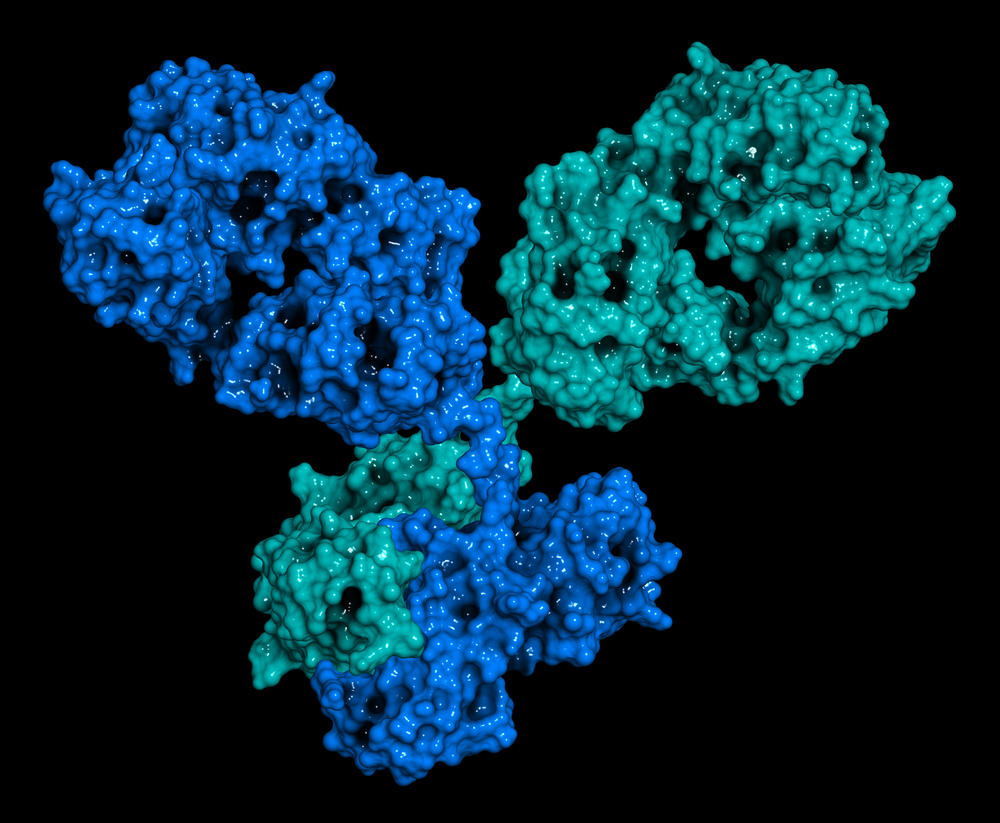MOUSE ANTI-EBOLA VIRUS NUCLEOPROTEIN ANTIBODY (SUDAN/ZAIRE) (7G2)
Mouse anti Ebola virus nucleoprotein antibody (clone 7G2) recognises Ebola virus nucleoprotein from Sudan and Zaire species.
PRODUCT DETAILS – MOUSE ANTI-EBOLA VIRUS NUCLEOPROTEIN ANTIBODY (SUDAN/ZAIRE) (7G2)
- Mouse anti Ebola virus Nucleoprotein monoclonal IgG1 antibody (strain Sudan/Zaire, clone 7G2).
- Greater than 90% purity by SDS-PAGE and buffered in PBS, pH7.2.
BACKGROUND
Ebola virus disease (EVD) is a severe disease caused by species of Ebolavirus (EBOV), of the family Filoviridae. Ebolavirus are enveloped, negative-sense, single-stranded, RNA viruses. Prior to 2007, four species of Ebolavirus were recognised including Zaire, Sudan, Reston and Tai Forest. The presence of a fifth EBOV virus species, Bundibugyo ebolavirus (BEBOV) was identified after an outbreak of EVD in the Bundibugyo District of western Uganda in 2007.
Three of these virus species, Zaire, Sudan and Bundibugyo ebolavirus have caused significant disease outbreaks in humans. The Zaire subtype of the Ebola virus family is currently the most important in relation to outbreaks of disease in humans. The Zaire subtype was responsible for the largest ever outbreak of EVD, which started in West Africa in 2014.
Studies suggest that fruit bats of the Pteropodidae family act as natural hosts for the Ebola virus. Transmission of EBOV to humans is thought to occur through direct contact with sick or dead wild animals that have been infected by the virus. Outbreaks of EVD are associated with person-to-person transmission after the virus is introduced into humans from the zoonotic reservoir (WHO).
During outbreaks the virus is commonly transmitted through direct contact with infected persons or their bodily fluids. The onset of EVD is associated with nonspecific clinical symptoms, including fever, myalgia, headache, abdominal pain, nausea, vomiting, and diarrhoea. Common symptoms of EVD also include fever with a rash appearing around the face, trunk and arms. In the later stages of disease, overt haemorrhage can occur and has been reported in up to 50% of cases. Severe cases of EVD can be fatal (MacNeill, A).
The severity of disease varies according to the species of EBOV involved, but the molecular mechanism influencing virulence and pathogenesis has not been fully elucidated. However, studies suggest that EBOV glycoprotein (GP) may be responsible for critical pathogenic differences among EBOV species.
REFERENCES
- World Health Organization: Ebola virus disease
- Adam MacNeil et al (2010). Proportion of Deaths and Clinical Features in Bundibugyo Ebola Virus Infection, Uganda. Emerg Infect Dis. 16(12): 1969–1972.

